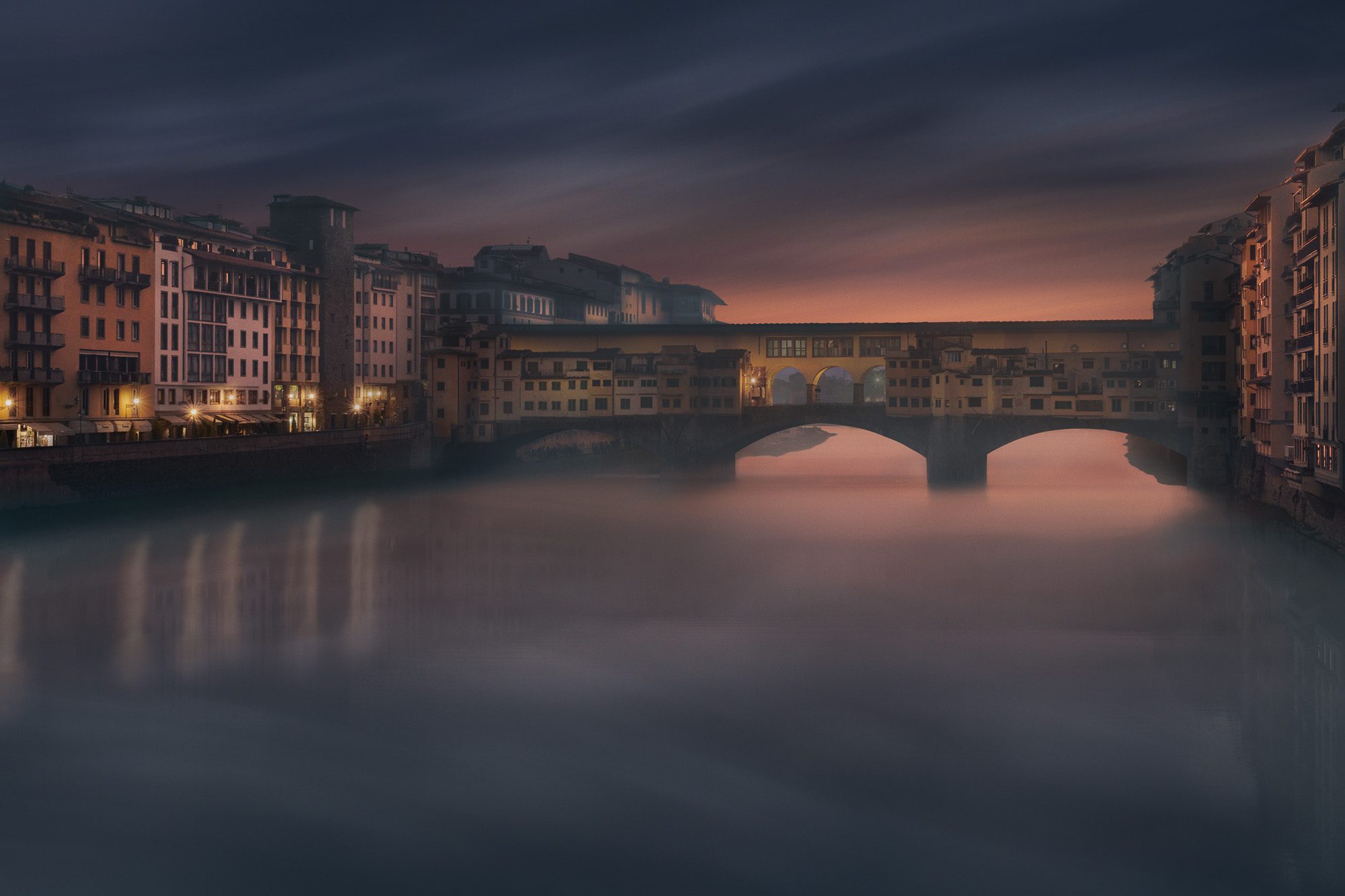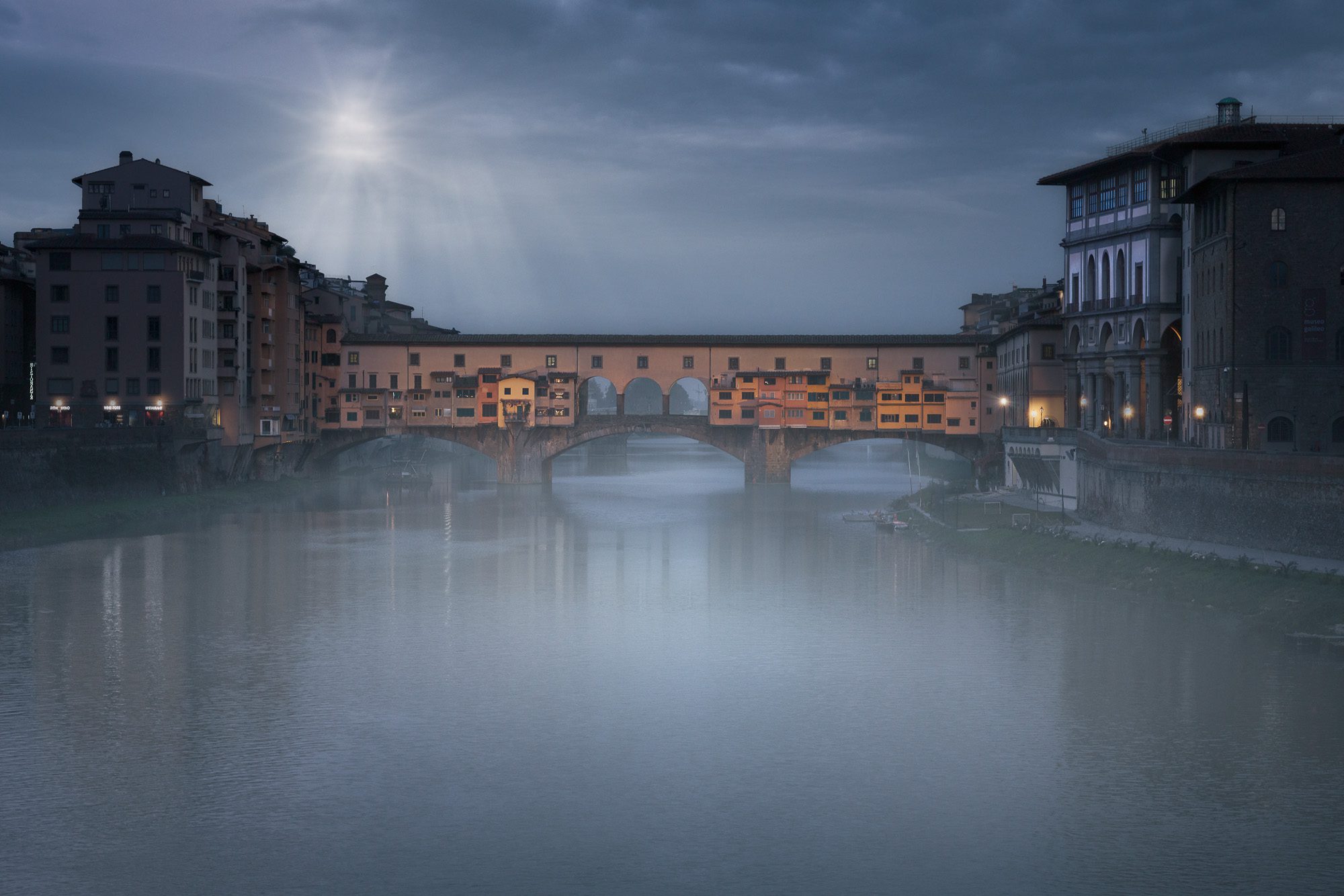
An iconic component of this famed Renaissance city is the Ponte Vecchio. Rebuilt after a flood in 1345, it is the oldest existing bridge across the River Arno and is one of the few remaining examples of an urbanised bridge.
It is flanked on either side by rows of shops projecting asymmetrically over the river. Its upper gallery, designed by Giorgio Vasari in 1565, is a one-kilometre corridor that connects the Palazzo Pitti to the Uffizi, allowing the ruling Medici’s the luxury of traversing the Arno without having to come in contact with the cities populace.
In 1593, Ferdinand I, in an attempt to elevate the bridge’s status and make it more hygienic, decreed that the shops, which until then were monopolised by butchers and fishmongers, were to be replaced with goldsmiths and jewellers, as it is today.
During World War II, unlike the other bridges that span the Arno, the Ponte Vecchio was spared from destruction by the retreating German forces. And in 1966, the city suffered catastrophic flooding that caused considerable loss of life and untold damage to the city’s priceless collections of great works of art and books; miraculously, although damaged, this old bridge with a view survived.
The two images featured on this page are views taken from the neighbouring bridges of Ponte Dalle Grazie and Ponte Santa Trinita. Both pictures were taken at the ungodly hours of moonset and blue hour. For those readers with post-processing sensibilities, please look away now, as the images have been treated.
Now I could waffle on until the cows come home on the merits of retaining a form of purity to the photographic image, and in truth, I practice this ethos in my street photography. However, with my travel photography, especially when tackling the iconic components of a city, I attempt to instil a mood that is as much a personal narrative of how I feel about the place. John Urry wrote,” As people begin to consume only pieces of the city, it loses its identity, and the original image of the city is transformed. The city is distorted in the form of photographs, postcards, and advertisements that focus on the target piece and not the city as a whole”. And as I set up my tripod in the darkness in a pre-determent spot decided upon during a recce the previous day, that is precisely what I was doing, capturing a piece of the city and transforming it through the use of selective viewpoint, shooting time and post-production treatment. These photos of the Ponta Vecchio are not mirror images but rather verge on the hyper-real.

